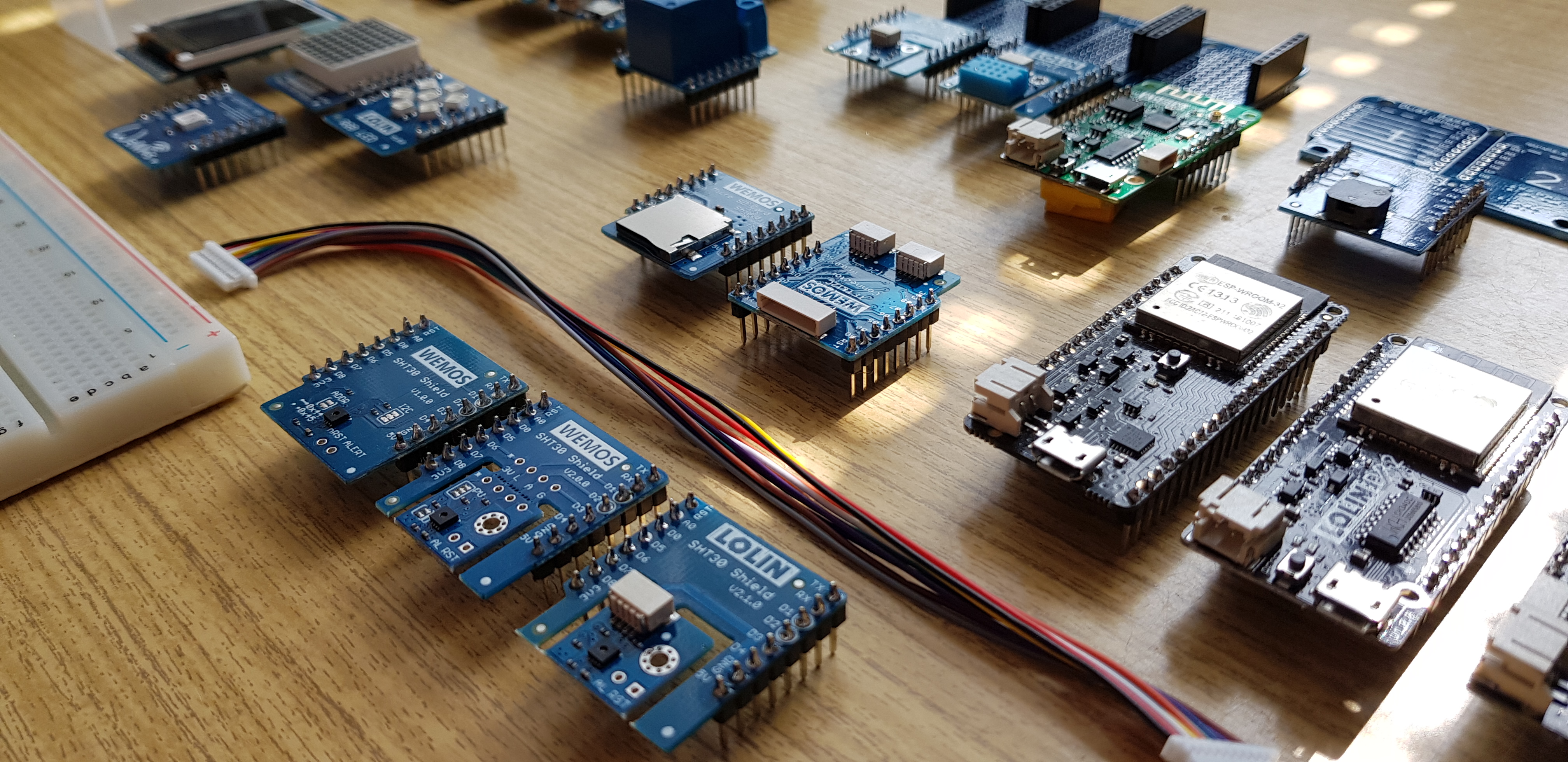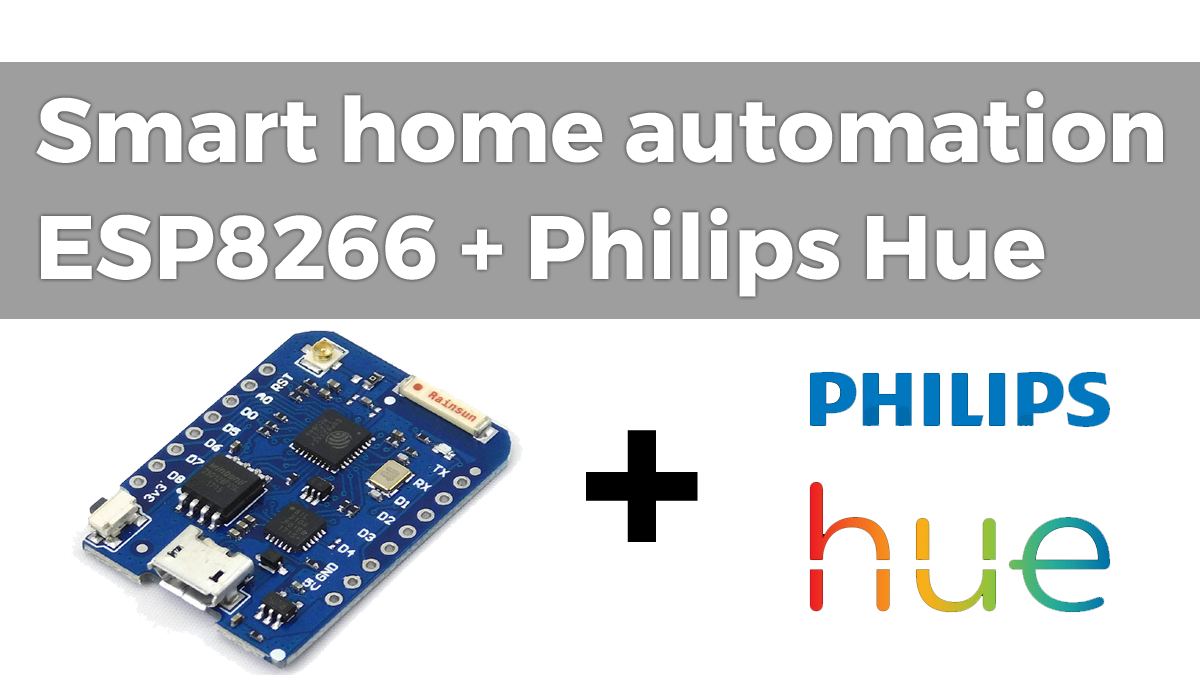|
/************************************************************* |
|
Philips Hue @ Wemos D1 mini (ESP8266) |
|
Basic demo of PIR and ambient light sensor to demonstrate |
|
communication between ESP and Hue gateway |
|
by Petr Lukas |
|
|
|
Functionality: |
|
|
|
Sensor activates the light only in case certain level of light is detected |
|
(by default less than 100 lx). If the ambient light sensor light level exceeds the set value, |
|
switch-off request is sent and motion detection is ignored. |
|
|
|
If the PIR sensor stops to detect motion, the timer is |
|
started to switch off the light after set time interval. |
|
|
|
Controller LED indicates detected motion. |
|
*************************************************************/ |
|
|
|
#include <ESP8266HTTPClient.h> |
|
#include <ESP8266WiFi.h> |
|
|
|
// Ambient light sensor |
|
#include <Wire.h> |
|
#include <BH1750.h> |
|
|
|
// IP of Hue gateway |
|
String ip = "YOUR_IP"; |
|
|
|
// Hue gateway user name |
|
String user_name = "YOUR_USERNAME"; |
|
|
|
// Light identificator |
|
int light_id = 3; |
|
|
|
// Default delay (10 seconds) to switch light back to OFF status |
|
int switch_delay = 10; |
|
|
|
// Default ambient light level (100 lx) to prevent light switch when certain light level is detected |
|
int light_level = 100; |
|
|
|
// Wifi network SSID |
|
const char* ssid = "YOUR_SSID"; |
|
|
|
// Wifi network password |
|
const char* password = "YOUR_PASSWORD"; |
|
|
|
const int PIR = D3; |
|
int PIRState = 0; |
|
unsigned long previousMillis = 0; |
|
bool state = false; |
|
|
|
BH1750 light(0x23); |
|
|
|
void setup() { |
|
// put your setup code here, to run once: |
|
Serial.begin(115200); |
|
WiFi.begin(ssid, password); |
|
Serial.print("Connecting to WiFi"); |
|
while (WiFi.status() != WL_CONNECTED) { |
|
delay(1000); |
|
Serial.print("."); |
|
} |
|
Serial.println("Connected to the WiFi network"); |
|
|
|
// Light level sensor |
|
Wire.begin(); |
|
if (light.begin(BH1750::CONTINUOUS_HIGH_RES_MODE)) { |
|
Serial.println(F("BH1750 Advanced begin")); |
|
} else { |
|
Serial.println(F("Error initialising BH1750")); |
|
} |
|
|
|
// PIR sensor |
|
pinMode(PIR, INPUT); |
|
pinMode(BUILTIN_LED, OUTPUT); |
|
// set initial state, LED off |
|
digitalWrite(BUILTIN_LED, HIGH); |
|
|
|
|
|
} |
|
|
|
void loop() { |
|
// Set 125 ms to measure precise light level or switch to CONTINUOUS_LOW_RES_MODE and set 20 ms delay |
|
delay(125); |
|
unsigned long currentMillis = millis(); |
|
|
|
PIRState = digitalRead(PIR); |
|
|
|
if(getLightlevel() > light_level){ |
|
digitalWrite(BUILTIN_LED, HIGH); |
|
if(state == true) switchLight(1, false); |
|
return; |
|
} |
|
|
|
if (PIRState == HIGH) { |
|
digitalWrite(BUILTIN_LED, LOW); // LED on |
|
previousMillis = currentMillis; |
|
if(state == true) return; |
|
switchLight(1, true); |
|
} else { |
|
digitalWrite(BUILTIN_LED, HIGH); // LED off |
|
if(state == false) return; |
|
if (currentMillis - previousMillis >= (switch_delay*1000)){ |
|
previousMillis = currentMillis; |
|
switchLight(1, false); |
|
return; |
|
} |
|
} |
|
} |
|
|
|
|
|
int getLightlevel(){ |
|
uint16_t lux = light.readLightLevel(); |
|
// Uncomment these lines to detect and set proper light level |
|
//Serial.print("Light: "); |
|
//Serial.print(lux); |
|
//Serial.println(" lx"); |
|
return lux; |
|
} |
|
|
|
void switchLight(byte room, bool current_state){ |
|
state = current_state; |
|
HTTPClient http; |
|
String req_string; |
|
req_string = "http://"; |
|
req_string += ip; |
|
req_string += "/api/"; |
|
req_string += user_name; |
|
req_string += "/lights/"; |
|
req_string += light_id; |
|
req_string += "/state"; |
|
Serial.println(req_string); |
|
http.begin(req_string); |
|
http.addHeader("Content-Type", "text/plain"); |
|
|
|
String put_string; |
|
put_string = "{\"on\":"; |
|
put_string += (current_state)? "true" : "false"; |
|
put_string += "}"; |
|
|
|
int httpResponseCode = http.PUT(put_string); |
|
|
|
if(httpResponseCode > 0){ |
|
String response = http.getString(); |
|
Serial.println(httpResponseCode); |
|
Serial.println(response); |
|
} else { |
|
Serial.print("Error on sending PUT Request: "); |
|
Serial.println(httpResponseCode); |
|
} |
|
http.end(); |
|
} |



